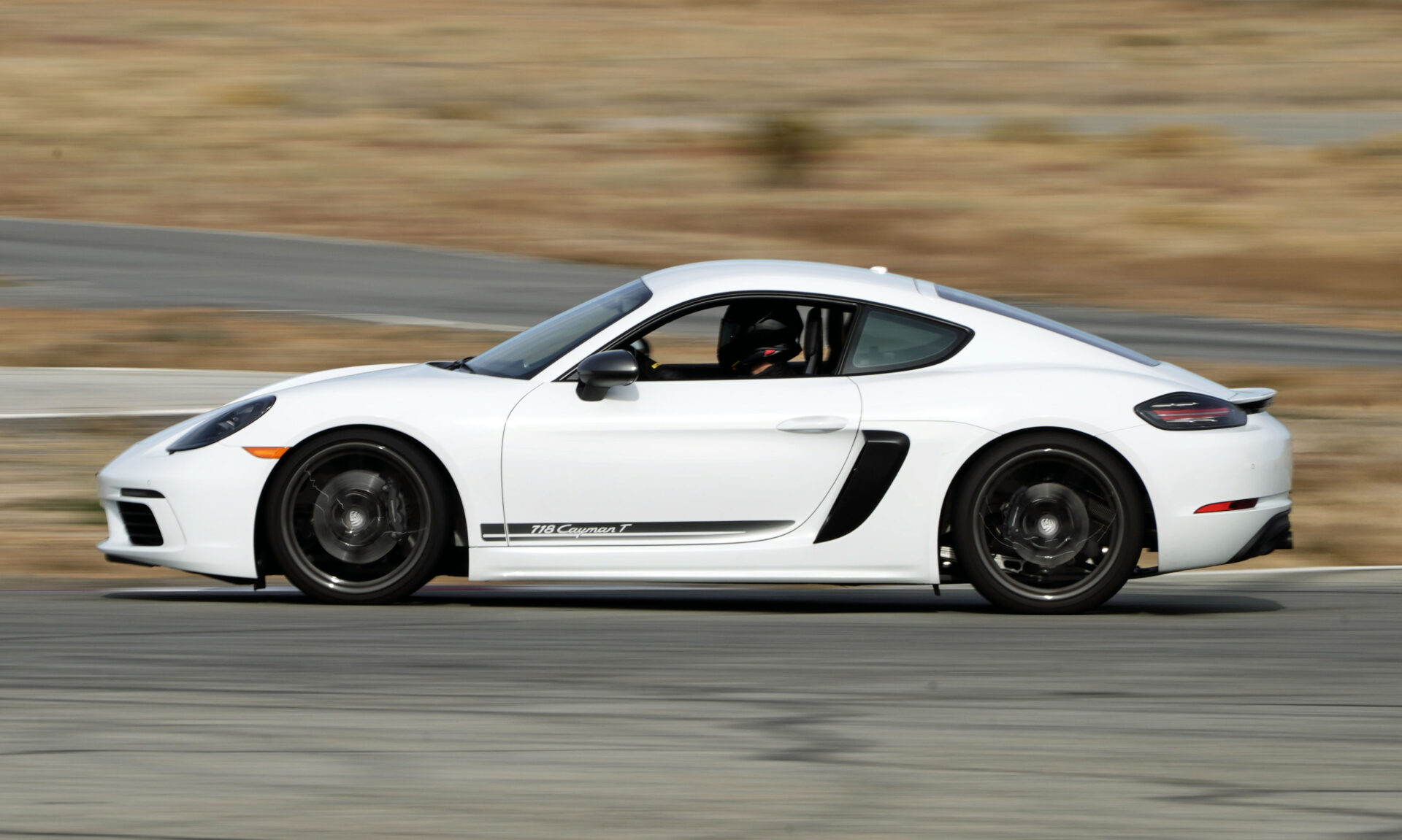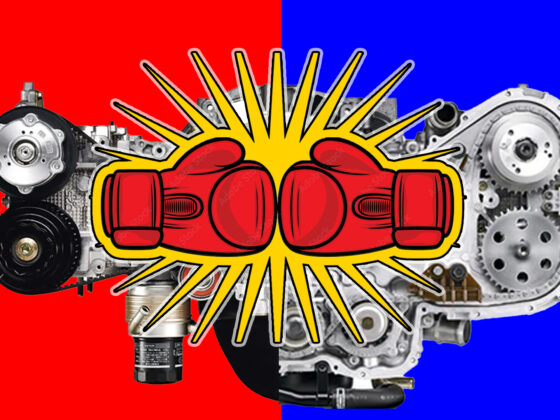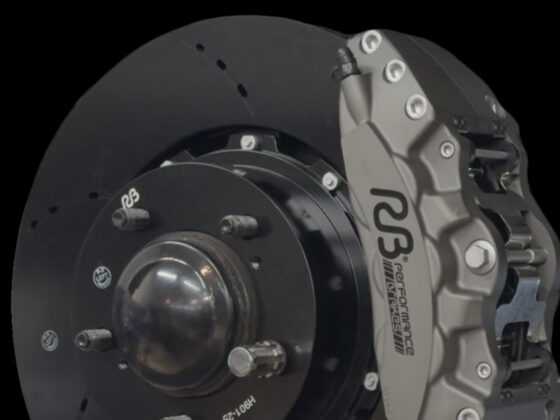
 The manganese (orange stuff) in the race-gas concentrate provided some flow visualization of the exhaust flow in my x-pipe. Where there are fewer orange particulates should be where there is higher exhaust velocity. Mike noticed my x-pipe was a little offset at PECLA. I swear I had installed it centered. After Streets, the x-pipe had definitely shift towards the left about half an inch which makes sense. More exhaust flow should be going down the right side of the car because the flow path is about half the length compared to going down the left side of the car. So, the extra flow from the right side pushed the x-pipe over to the left. Seems the deep-V in my design to block the exhaust flow paths from ramming straight into each other is doing its job. I re-centered the x-pipe and tightened the clamps more.
The manganese (orange stuff) in the race-gas concentrate provided some flow visualization of the exhaust flow in my x-pipe. Where there are fewer orange particulates should be where there is higher exhaust velocity. Mike noticed my x-pipe was a little offset at PECLA. I swear I had installed it centered. After Streets, the x-pipe had definitely shift towards the left about half an inch which makes sense. More exhaust flow should be going down the right side of the car because the flow path is about half the length compared to going down the left side of the car. So, the extra flow from the right side pushed the x-pipe over to the left. Seems the deep-V in my design to block the exhaust flow paths from ramming straight into each other is doing its job. I re-centered the x-pipe and tightened the clamps more.
 On the drive to the track which is uphill, I averaged about 30mpg. On the drive home downhill, I got almost 35mpg including a bit of stop-n-go traffic in LA. It’s easy to get 32mpg on a highway drive while in Sport + mode. Driving in Normal mode, I would expect to improve that figure a coupe mpg due to the engine coolant and oil running hotter; hotter oil is less viscous for lower shear losses and hotter coolant means less heat loss from the combustion to the coolant.
On the drive to the track which is uphill, I averaged about 30mpg. On the drive home downhill, I got almost 35mpg including a bit of stop-n-go traffic in LA. It’s easy to get 32mpg on a highway drive while in Sport + mode. Driving in Normal mode, I would expect to improve that figure a coupe mpg due to the engine coolant and oil running hotter; hotter oil is less viscous for lower shear losses and hotter coolant means less heat loss from the combustion to the coolant.
With the car only making 300hp, the stock thermal systems are up to the task of keeping the coolant and oil temperatures in check while tracking in mid-60F temperatures. The coolant temperature stayed in the mid-80C range. At PECLA, I saw a peak oil temperature of 106C and I got it just a smidge warmer at Streets of Willow at 108C. My personal target is to keep the oil temperature below 115C. The higher trim 718 GTS with more power also comes with a third/central radiator to handle the extra heat from the extra power. The GTS comes with bigger brakes too. Y’all know I’m not leaving the power stock, so you can probably figure out where this is going. Oh yeah, I went around Streets of Willow roughly four seconds faster a lap than I did in the S2000 back when that car was naturally aspirated, driving both at my comfy 90% threshold; no doubt both cars could have turned much faster times in the hands of other drivers, but the times I turned were at my comfort levels which includes the consideration of potentially wadding up the car. Anyway, more torque, more power, and more tire helped with the lower lap times. But there’s a lot of room for improvement and getting the car tweaked to my personal preferences.




13 comments
Check out the AWE Tuning “Foiler” wind diffusers—they make high-speed, window-down driving a much better experience.
Yup, I learned about those about five years ago. I’m typically a function over form type of guy, but I don’t particularly care for how the foiler looks. And it only comes into play during track days. Functionally, I do wonder if it would affect the airflow into the side scoops. On a 911 Carrera, not an issue as they don’t have the side scoops. Maybe come into play on the 911 Turbo and GT cars.
Jaguar’s also have reversed threads on the tow hook for no good reason. I learned this during a snow storm on a busy street while trying to get my wife’s car unstuck. Not the best place to spend 10 minutes trying to figure out why the hook won’t thread in.
LH threads on the tow hook are to prevent it from being easily used in some other manner, separate from the car, for which it is not rated… such as bolted to a hoist and used for vertical lifting.
Huh… learn something new everyday. So now the question is…. how many people tried using the tow hook not for its intended purpose and got hurt.
I was taught the LH thread is necessary so that when the tow cable is pulled taut, the direction of the cable winding would not start loosening the tow hook.
Most VW/Audi cars as far as I know are like that.
Not sure about Porches though, I remember the 964 having a RH threaded tow hook.
Excellent write up! I’m looking forward to seeing what you do to make it a better street and track car. I’m always baffled at how Porsches can pull over 1G with inferior suspension like McStruts and ~0 degree front camber alignment. It seems to defy the law of physics, but it’s probably more like it’s taking advantage of the laws of physics. Your knowledge and findings are very appreciated in the 718 community.
I love coming back here for the Cayman T updates. Thank you for the detailed write ups!
Are the front struts double bolted to the hub? I dial in some negative front camber by switching out the top bolt with one with a slightly smaller diameter one and pushing in the hub. Seems to get an east 2-3 degrees. It’s amazing how much better the front feels with such a simple mod. I make sure to use a high grade bolt. I also lighten my cars significantly from stock.
I’ll have to look at the strut design. What the Cayman and 911 chassis’ do have are slotted mounting holes for the upper strut mounts. I’ll have the details in the next article, but that allowed me to dial in about -1.5 deg of camber up front. Options for getting more camber are adjust camber plates and GT3 lower control arms to get up to the -3 or more range. On my old Evo8, going from whatever the stock camber was to -3 with adjustable camber plates made a world of difference. On Project S2000, I was running -2.8.
Yeah, looks like you will need some new hardware:
“You need minimum -2 degrees all around for the track. The outside wear is from a lack of negative camber. I run -2.5 to -3 in my Cayman. You’re likely going to need a method for adjusting camber in the front. The OE slotted top mounts are very limited in adjustment range. The GT3 LCAs work well for a dual purpose car. For cars that see a good bit of track time and aren’t driven in the winter we lean towards SPL. Given you’re on stock suspension I’d suggest GT3 LCAs.”
Yup, absolutely need new hardware to get to -3deg camber. I made a full build list of parts before I even got the car 🙂 The rate I’m destroying the shoulders of the tires and the fact the stock thermal system is good enough for the stock 300hp in moderate weather has shifted my parts purchase order a bit. I was originally going to attack the engine thermal system first but now I’ll get suspension bits next.
I love all the data you’re gathering before doing any mods.
Also “late apex point and shoot”? That’s how you drive the grey MotoIQ Project Mustang, too. 😀